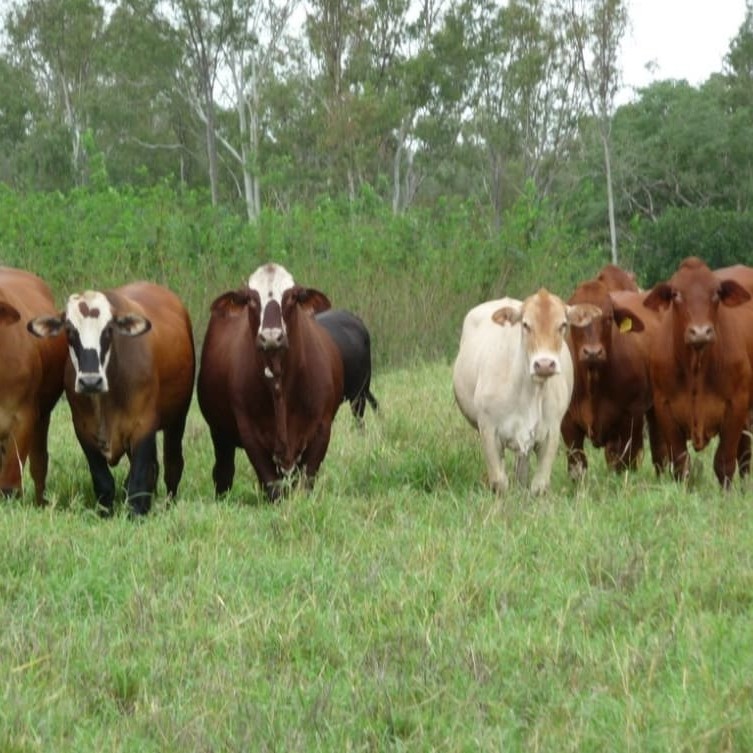 By planting leucaena into improved pasture grasses, cattle producers are now consistently doubling both their stocking rate and kilograms of beef per hectare turnoff to deliver long term profitability.
By planting leucaena into improved pasture grasses, cattle producers are now consistently doubling both their stocking rate and kilograms of beef per hectare turnoff to deliver long term profitability.
That was a message delivered to the Beef Australia 2012 forum attendees who turned out in force to keep pace with the leucaena research and development progress and hear how practical cattle producers are managing this high protein leguminous browse shrub.
Speaking on behalf of the Leucaena Network, executive officer Berry Reynolds said there was an estimated 220,000 hectares of leucaena planted across Queensland, Northern Territory and the Kimberley region which represented some 500 cattle holdings.
Mr Reynolds urged all intending leucaena growers to join the Leucaena Network to gain a full appreciation of the voluntary Code of Practice management guidelines that promote the responsible establishment and management of leucaena-grass pastures.
Queensland Department of Agriculture, Fisheries and Forestry senior pasture agronomist Stuart Buck, Biloela, said the results of multiple trials and practical hands-on grower experience had shown that growing cattle recorded an average weight gain of 0.7kg/head/day or 250kg liveweight/head/year. That performance equates to 167kg/ha/year at a stocking rate of 1 animal to 1.5ha.
Mr Buck said a 2009-2010 trial at Brigalow Research Station showed steers on buffel grass pasture produced 90kg of beef/ha/year whereas the leucaena-buffel grass mix turned off 182kg/ha to again reinforce the economic benefits of establishing leucaena. a perennial with a 30 year plus productive life.
"Leucaena needs to be subjected to high stocking pressure for short periods prior to flowering to prevent seed set and needs to be rested when about 10 per cent of leaf remains," Mr Buck said.
"Keeping leucaena height down during good seasons is a management challenge so it is recommended that row spacing should be widened to at least 8m or more.
"Because of leucaena's perceived weed threat, Whitsunday Regional Council recently declared leucaena as a weed and intending growers will now have to apply for approval to plant.
"It is therefore imperative for leucaena growers to adhere to the industry Code of Practice as the production and environmental benefits of leucaena production far outweighs the potental weed threat when managed correctly."
Respected Central Queensland Brahman cattle producer Brett Coombe, general manager of the German-owned company THF Agribusiness that operates five properties centred on Moura district, has built a burgeoning backgrounding business using irrigated leucaena.
"In the past four years, we have planted 60ha concentric circles under a centre pivot at our home property Bindaree and a further 243ha on conventional rows under four pivots on the Fitzroy River frontage block, The Pocket," Mr Coombe said.
"We opted for 6-8m rows widths and planted a pasture grass mix of rhodes, bambatsi and Gatton panic which we graze all year around under a rotational grazing system.
"THF's principal business is backgrounding 7000 to 8000 steers annually for NAPCO plus buying in and finishing 2000 of our own steers.
"These north Australian-bred NAPCO weaners arrive at an average weight of 290kg and despite being subjected to dehorning and castration, these cattle are still averaging 0.81kg/head/day," he said.
To manage the leucaena plant height to prevent centre pivot sprinkler damage, a home-built slasher-chopper is used to reduce plant height to between 60cm to 90cm as needed.
Northern Territory Department of Resources systems research officer, Peter Shotton, based at Douglas Daley Research farm for the past 25 years, has been undertaking leucaena-improved grass pasture trials for the past eight years in this 1200mm rainfall region.
Four leucaena varieties were trialled on 8m row spacing in combination with buffel, pangola and sabi grass. Beef production has been a consistent 200kg/hd/year at stocking rates of 1.25 to 1.5 hd/ha.
Mr Shotton said that while liveweight gain potential was excellent, only 400ha of leucaena was being grown in the Territory.
"We attribute the slow leucaena uptake by graziers to the $450/ha establishment cost, a lack of farming expertise to plant, future market uncertainty and no current market access for slaughter cattle," Mr Shotton said.
Other limiting factors had been the high land values, availability of water for irrigation and the perceived weed threat, he said.



HAVE YOUR SAY